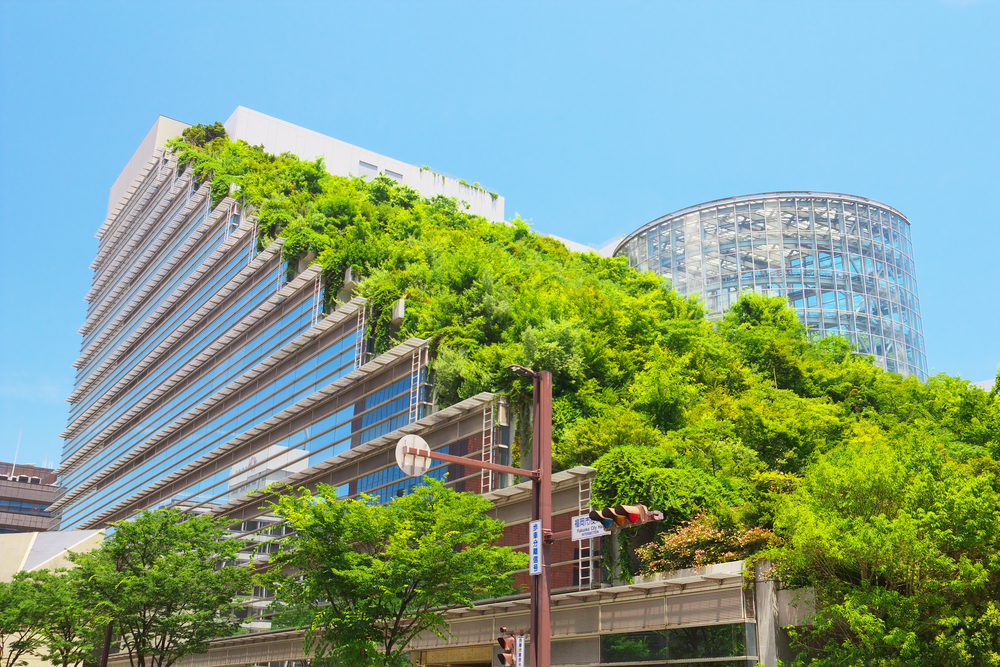A “green” building minimizes or eliminates harmful effects on our weather environment during design, construction, or operation. It can also have positive effects. Green structures protect priceless natural resources and raise our standard of living. Any building, whether a house, an office, a school, a hospital, a community hall, or any other kind of facility, can be a green building. It is important to keep in mind, nevertheless, that not all green structures can or should be the same. Different nations and areas have various qualities that influence how they approach green building, including specific climatic conditions, local cultures, and traditions, a diversity of building kinds and ages, or broad-ranging environmental, economic, and social goals.
Sustainable construction practices reduce energy and water usage and are essential to creating sustainable cities to counteract climate change. Below, we examine some green constructions that pave the way for more responsible urban design, ranging from massive skyscrapers to innovative museums. Buildings that are green or sustainable stand out because they use less energy. Achieving a high-efficiency level is necessary since it decreases pollution by using less energy, water, and other resources.
What Makes A Building Green?
It’s hardly surprising that green building continues to gain appeal, given the rising environmental awareness in our culture. Architects are learning new sustainable design techniques for anything from homes to commercial buildings to protect our ecosystem and lessen our carbon footprint. Residents who reside or work in green structures have seen a significant improvement in their health, stress levels, and overall quality of life because of interior design features, including better lighting sources, thermal properties, ergonomic features, and even upgraded air quality.
Efficient Use Of Water
Water efficiency is a key benefit of sustainable construction. Minimizing water use during construction and offering methods to lessen the water footprint of the structure. According to research, green buildings can lessen the stress on shared water supplies and water waste by using water-efficient plumbing fixtures.
Sustainable Sites
Preserve and maintain the natural environment, lessen pollution and the exploitation of natural resources, and promote contact with the natural world. A sustainable structure can practically save your life. Studies show that living in green buildings offers a variety of health advantages because they were built using eco-friendly materials. Green buildings, for instance, steer clear of utilizing construction materials that could include dangerous, volatile organic compounds (VOCs) or plastic by-products, both of which have a history of discharging poisonous gases and carcinogens into the atmosphere.
Location
Avoid building in environmentally vulnerable areas and offer public transportation to limit the use of private vehicles. This may reverse the benefits of constructing green buildings in certain areas.
Energy And Atmosphere
To lessen pollution, use renewable energy, consume less energy, and improve energy efficiency. Vital resources like water and electricity are being safeguarded thanks to the innovations, sustainable practices, and technology created by brilliant architects worldwide. Green buildings have a greater capacity for efficiency, which can lessen the environmental impact on such resources, thereby protecting and preserving them for future generations.
Materials And Resources
Include recycling programs, utilize eco-friendly products, and conserve as many resources as possible while building. One of the biggest advantages of green buildings is that they require less maintenance because they have carefully planned architectural features that cut energy consumption and lower occupants’ energy and water expenses. Corporate and residential owners can save a ton of money thanks to these effective structures. Although the initial cost for building owners to construct such structures may be greater than that of conventional, non-green types, the investment is returned exponentially over time.
The “Green” Effect
As is well known, green buildings are less harmful to the environment than conventional ones. By employing alternative building materials and recycling construction debris instead of hauling it away in endless trucks, their construction reduces the amount of on-site grading and conserves natural resources. Most interior rooms in a green building are naturally illuminated and offer views of the outdoors, and the indoor air quality is much better thanks to highly effective HVAC systems and low-VOC furnishings, paint, and flooring.
Before 2000, businesses tended to view green buildings as intriguing experiments but impractical business endeavors. Since then, several events have led to a significant change in perspective. First, developing trustworthy performance assessment and building-rating systems for new construction and renovations has contributed to shifting corporate perspectives on the green. Finally, green furnishings, mechanical systems, and building materials are now more widely available and substantially cheaper than their conventional counterparts—in certain situations. LEED-certified green buildings are an international answer for cities, communities, and neighborhoods. Green building market are helping the environment, energy use, and waste. They also preserve water, prioritize safer materials, and limit our exposure to toxins. The physical benefits may not be obvious to renters or visitors.
- Operating cost savings, shorter payback periods, and enhanced asset value in innovative green buildings and green retrofits have consistently been reported. Since 2012, the proportion of owners claiming that level of increase has nearly doubled.
- Client requests and healthier buildings are the top two impetuses for green buildings in the US, but one cannot ignore the financial advantages. Upfront investment in renewable energy building also makes properties more meaningful, with a growing number of building owners seeing a massive increase in asset value.
- Daily costs are reduced by green buildings year over year. LEED buildings have reported over 20% lower maintenance expenses compared to ordinary commercial buildings, while green building retrofits often reduce operating costs by almost 10% in just one year.
- Every industry and every community may benefit from green buildings. To date, green building has generated hundreds of billions of dollars for the American economy and millions of jobs.
Conclusion
The advantages of green building can be economic, social, and environmental because new technologies are continually being created to complement existing practices in making greener structures. Greener methods can help us maximize economic and environmental performance benefits in the coming years.
